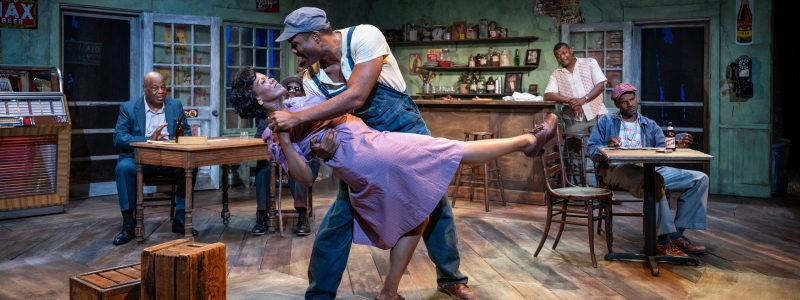Post-Show Discussion Activity

Use these questions to reflect, discuss, or journal about your experience and reactions to East Texas Hot Links! Explore any of the questions that interest you.
If engaging in this activity independently, consider taking notes or writing your reflections down. If engaging in this activity with a class or group, decide if you would like to answer every question in order, skip around, or select certain questions to spend time on.
Discussion Questions
- The play ends in a chaotic, deadly mess, and Court Theatre’s production does not shy away from the extreme sensory experience of this violence. What is the impact of having this be the final scene of the play? Why end a play in this abrupt, turbulent manner?
- Director Ron OJ Parson has directed this play several times. The play itself takes place in 1955 and was originally produced in 1991. Why is this an important story to return to? What bearing does it have today?
- What does hate do to us as a people? How does this play grapple with the disease of hatred?
- Adolph says, “I see better in the dark. Ain’t even got to close my eyes to dream.” How does one dream in the dark? How does the notion of “darkness” facilitate metaphorical sight?
- Think about which characters remain at the end of the show. Who are these people in the community? What does their survival signify?
- Despite the violence in the show, East Texas Hot Links has brilliant moments of humor, action, and passion. What role do these contrasting elements play not only in the show, but in the world, where violence is an everyday occurance?
- Why do you think this show is called East Texas Hot Links?
- This activity aligns with the following standards:
- Illinois Arts Learning Standards
- Anchor Standard 7: Perceive and analyze artistic work.
- Anchor Standard 8: Construct meaningful interpretations of artistic work.
- Anchor Standard 11: Relate artistic ideas and works with societal, cultural, and historical context to deepen understanding.
- Common Core State Standards
- CCSS.ELA.SL.1 Prepare for and participate effectively in a range of conversations and collaborations with diverse partners, building on others’ ideas and expressing their own clearly and persuasively.
- CCSS.ELA.RL.3 Analyze how and why individuals, events, and ideas develop and interact over the course of a text.
- Illinois Arts Learning Standards